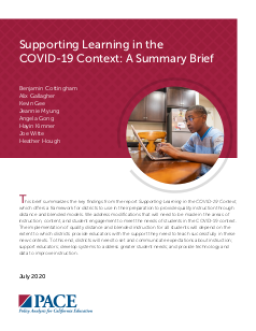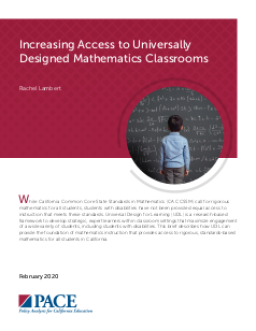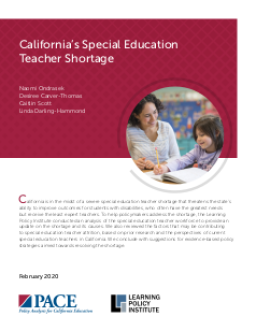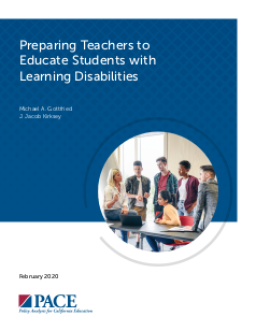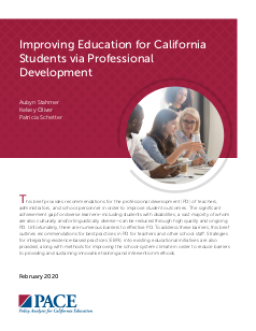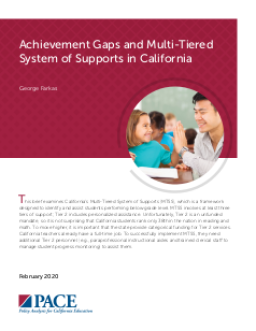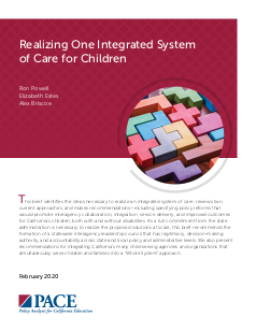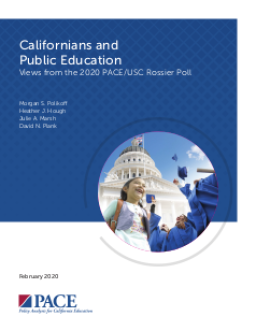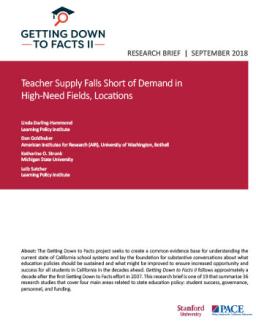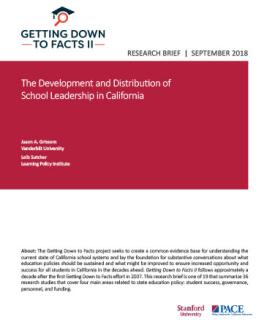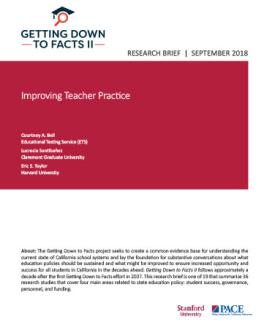Summary
This suite of publications provides 10 recommendations based on the PACE report to help educators and district leaders provide high-quality instruction through distance and blended learning models in the 2020-21 school year. Despite the challenges of COVID-19, research can guide decisions about student learning and engagement. These recommendations can be used as a framework to prioritize quality instruction.
Summary
This brief explains that while the California Common Core State Standards in Mathematics require rigorous instruction for all students, those with disabilities do not always have equal access to this instruction. It recommends the use of Universal Design for Learning (UDL), a research-based framework that enables expert learners within classroom settings and maximizes engagement for all students, including those with disabilities, to provide access to rigorous, standards-based mathematics instruction for all students in California.
Summary
Summary
Summary
Summary
Summary
Summary
In the run-up to 2020 elections, where do California voters stand on key education policy issues? This report examines findings and trends from the 2020 PACE/USC Rossier poll. Key findings include rising pessimism about California education and elected officials, continued concern about gun violence in schools and college affordability, and negative opinions about higher education. However, there is substantial support for increased spending, especially on teacher salaries.
Summary
California's teacher shortage is severe, affecting high-needs students and certain subjects such as math, science, special education, and bilingual education. Factors driving the shortage include new demands for teachers, declining enrollment in teacher preparation programs, and teacher attrition. Schools are hiring teachers lacking standard credentials and formal training. Unequal teacher distribution's impact is hard to assess due to data limitations. The shortage threatens California's education initiatives.
Summary
California's education system faces challenges in leadership development, with defunded professional development programs leading to inexperienced and high-turnover principals, particularly in high-poverty schools. Studies show that effective principals improve student learning, but current professional development opportunities are insufficient. Many principals seek more support, with rural areas receiving less coaching and development. Promising results have been seen from stronger state standards for administrator education programs.
Summary
California aims to improve the quality of teaching in its classrooms by focusing on teacher preparation and evaluation. The state's teacher preparation system aligns with standards but lacks consistent implementation. Disconnected information systems constrain policy-making, and teachers need better training for English learners. Teacher evaluation and support systems could enhance teaching effectiveness.
